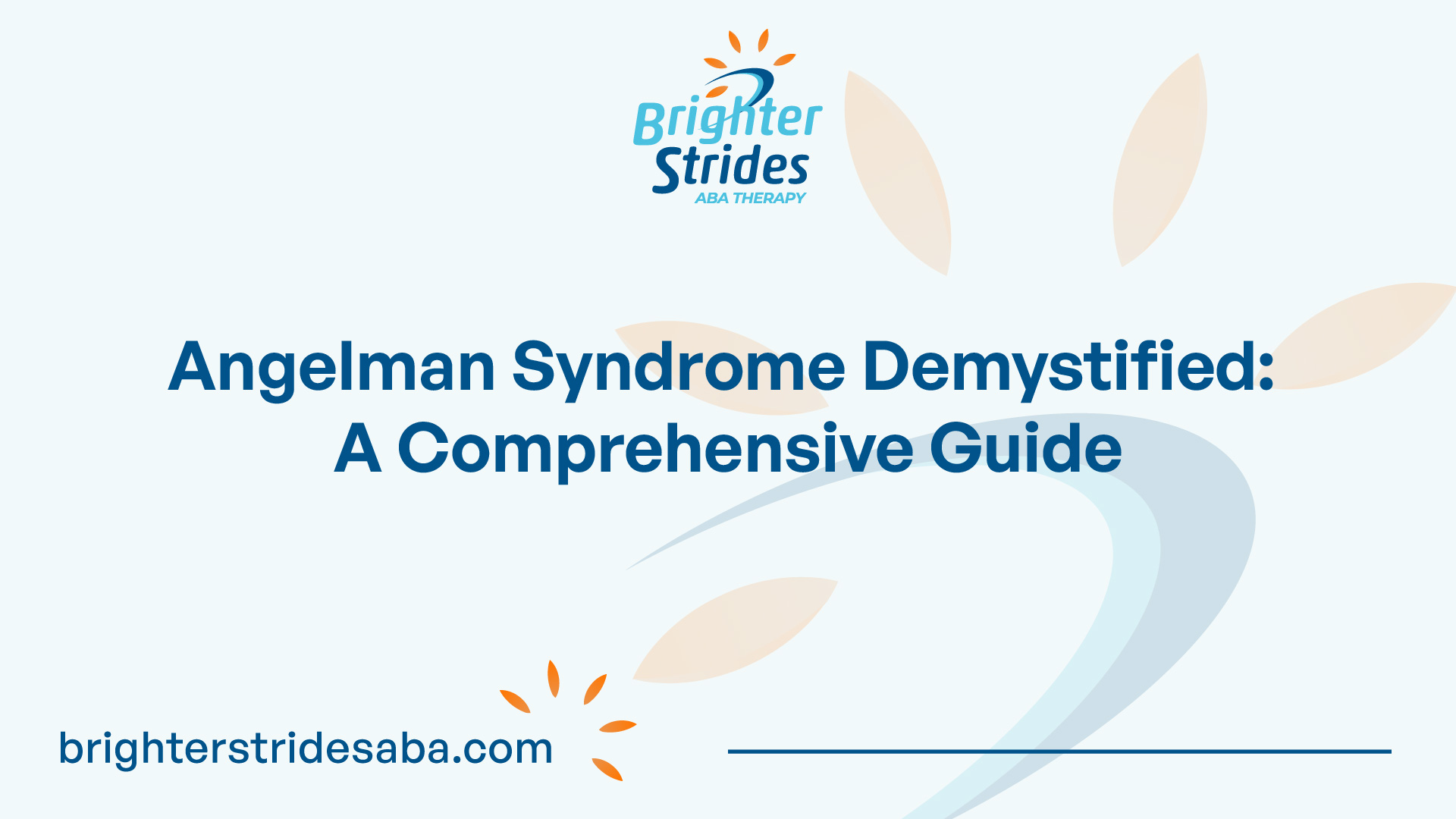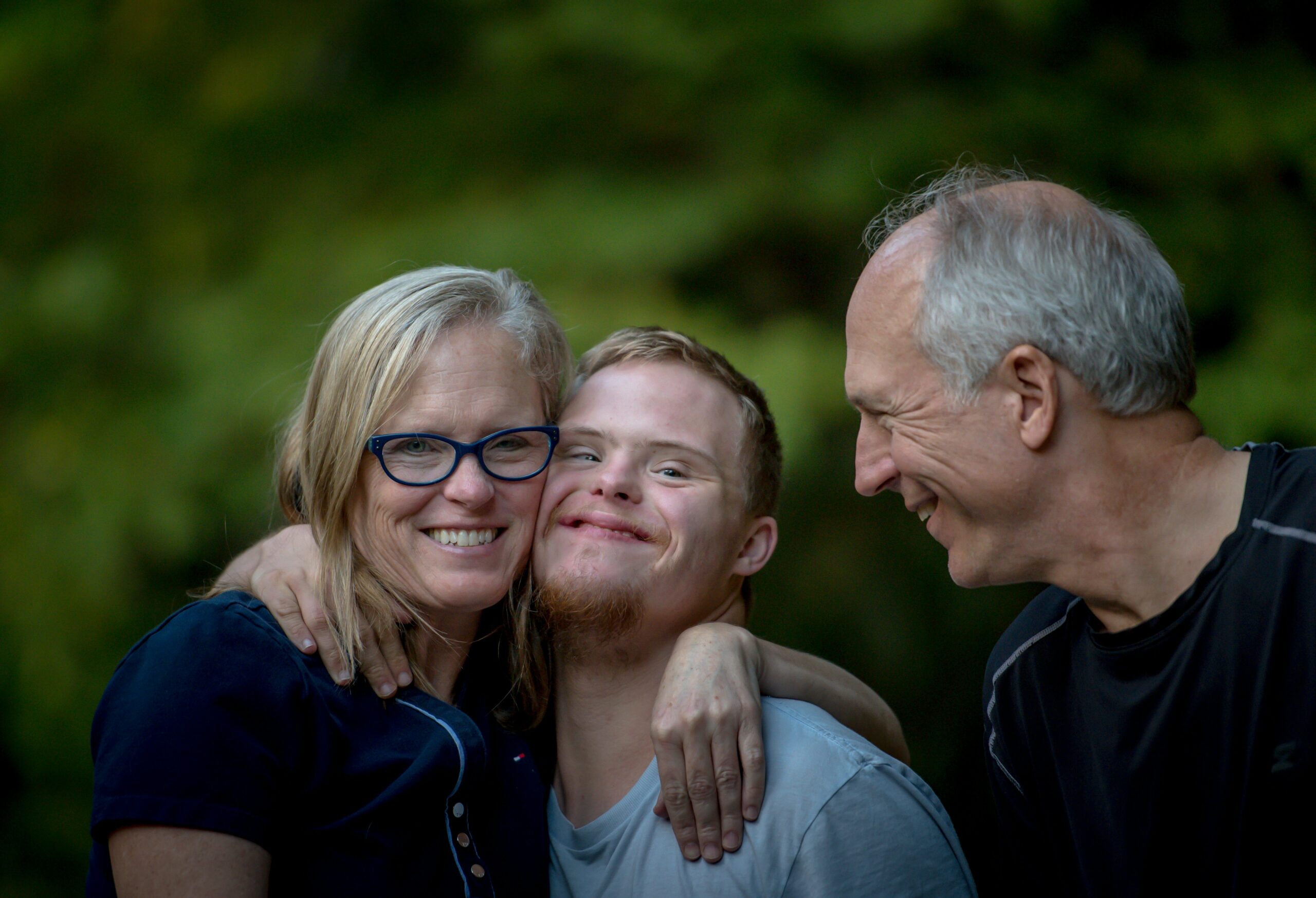Understanding Angelman Syndrome
Angelman syndrome is a rare neurodevelopmental disorder that primarily affects the nervous system. It is characterized by developmental delays, intellectual disability, speech impairment, ataxia, epilepsy, and microcephaly, among other common signs and symptoms that appear in early childhood.

What is Angelman Syndrome?
Angelman syndrome is a genetic disorder named after Dr. Harry Angelman, who first reported the syndrome in 1965. It affects an estimated 1 in 12,000 to 20,000 people, making it a rare condition. Individuals with Angelman syndrome typically display developmental delays between 6 and 12 months, with seizures usually starting between ages 2 and 3.
The main cause of Angelman syndrome is the loss of function of the UBE3A gene, which is responsible for producing a protein called ubiquitin protein ligase E3A. This protein plays a crucial role in the development and function of the nervous system. In most tissues of the body, both copies of the UBE3A gene are active. However, in neurons, only the copy inherited from the mother is active due to genomic imprinting. Different genetic mechanisms, such as deletions, mutations, or uniparental disomy, can inactivate the maternal copy of the UBE3A gene, leading to Angelman syndrome.
Causes of Angelman Syndrome
The causes of Angelman syndrome are not fully understood in 10 to 15 percent of cases, where changes involving other genes or chromosomes may be responsible. In some cases, the loss of the OCA2 gene, found on the same segment of chromosome 15 often deleted in Angelman syndrome, is associated with light-colored hair and fair skin but does not cause the other characteristic symptoms of the syndrome. Most cases of Angelman syndrome are not inherited and result from random events during egg and sperm formation or early embryonic development. However, in rare instances, genetic changes causing the syndrome can be inherited, such as variants in the UBE3A gene or adjacent DNA regions controlling gene activation.
To better understand the genetic basis of Angelman syndrome, genetic testing, including DNA methylation analysis, fluorescence in situ hybridization (FISH), or chromosomal microarray analysis, is typically performed. These tests help in confirming the diagnosis and identifying the specific genetic abnormality responsible for the syndrome.
Understanding the underlying causes of Angelman syndrome is crucial for providing appropriate support and interventions to individuals with this condition. Ongoing research efforts continue to shed light on the complex genetic mechanisms involved and pave the way for potential therapeutic advancements in the future.
Signs and Symptoms of Angelman Syndrome
Angelman Syndrome is a neurodevelopmental disorder that presents with a range of signs and symptoms. Understanding these manifestations is crucial for early identification and appropriate management of the condition. The signs and symptoms of Angelman Syndrome can be categorized into developmental delays, cognitive and behavioral characteristics, and physical features.
Developmental Delays
Individuals with Angelman Syndrome commonly experience developmental delays. These delays may be evident in motor skills, such as crawling, walking, and other physical milestones. Speech and language development are also significantly affected, with individuals often experiencing severe speech impairments or being nonverbal.
Cognitive and Behavioral Characteristics
Angelman Syndrome is characterized by intellectual disability, typically ranging from moderate to severe. Individuals may have difficulty with tasks involving problem-solving, learning, and overall cognitive function. Behavioral characteristics commonly associated with Angelman Syndrome include a happy demeanor, hyperactivity, short attention span, and difficulty sleeping.
As individuals with Angelman Syndrome age, the excitability and hyperactivity often decrease, and sleeping problems tend to improve. However, it’s important to note that the specific characteristics and their severity can vary among individuals.
Physical Features
In addition to developmental and cognitive aspects, certain physical features may be observed in individuals with Angelman Syndrome. These features can include fair skin, light-colored hair, and distinctive facial characteristics described as “coarse”. It’s important to remember that these physical features may not be present in all individuals with Angelman Syndrome and can vary in their expression.
To summarize the signs and symptoms of Angelman Syndrome:

Early recognition and diagnosis of Angelman Syndrome are crucial for providing appropriate support and intervention for individuals affected by this condition. With a comprehensive understanding of the signs and symptoms, healthcare professionals and caregivers can work together to optimize the management and quality of life for individuals with Angelman Syndrome.
Diagnosing Angelman Syndrome
Diagnosing Angelman syndrome is an important step in understanding and managing the condition. The diagnosis is typically confirmed through genetic testing, which plays a crucial role in identifying the genetic changes associated with Angelman syndrome. Two common diagnostic methods are genetic testing and differential diagnosis.
Genetic Testing
Genetic testing is a key tool in diagnosing Angelman syndrome. It involves analyzing a person’s DNA to identify specific genetic changes or mutations that are characteristic of the condition. Genetic testing can determine the absence or malformation of the UBE3A gene, which is often associated with Angelman syndrome [3]. Most cases of Angelman syndrome result from parts of the UBE3A gene being inactive or missing.
The diagnosis of Angelman syndrome through genetic testing is crucial not only to confirm the presence of the condition but also to assess the risk of having another child with the syndrome. Genetic testing provides valuable information to individuals and families, allowing for appropriate medical management and genetic counseling.
Differential Diagnosis
In some cases, the symptoms of Angelman syndrome may overlap with other neurodevelopmental disorders. Differential diagnosis is a process used to distinguish Angelman syndrome from similar conditions. It involves carefully evaluating the individual’s clinical features, medical history, and the results of genetic testing to rule out other potential causes of the symptoms.
By comparing the specific characteristics and genetic changes associated with Angelman syndrome to those of other conditions, healthcare professionals can make an accurate diagnosis. This helps ensure that individuals receive appropriate care and support tailored to their specific needs.
A correct diagnosis of Angelman syndrome is vital for understanding the condition and providing appropriate medical interventions, therapies, and support. Genetic testing, along with the process of differential diagnosis, plays a crucial role in identifying and confirming the presence of Angelman syndrome, enabling individuals and their families to access the necessary resources and support for managing the condition.
Managing Angelman Syndrome
When it comes to managing Angelman Syndrome, the focus is on addressing the various symptoms and providing supportive therapies to enhance the individual’s quality of life. Treatment plans typically involve a multidisciplinary approach that combines medical interventions, behavioral and developmental interventions, and supportive therapies.
Seizure Management
Seizures are a common feature of Angelman Syndrome. Effective seizure management is crucial for minimizing their impact on an individual’s daily life. Medications prescribed by a healthcare professional are often utilized to control and reduce seizure activity. The specific medication and dosage will depend on the individual’s unique needs and seizure type. Regular monitoring and adjustments to the medication regimen may be necessary to achieve optimal seizure control.
Behavioral and Developmental Interventions
Individuals with Angelman Syndrome may experience various behavioral and developmental challenges. Behavioral interventions, including applied behavior analysis, can be helpful in addressing behavioral issues, improving communication skills, and promoting social interactions. These interventions are tailored to the individual’s specific needs and are often implemented by a professional behavior analyst or therapist.
Developmental interventions, such as physical therapy, occupational therapy, and speech therapy, play a vital role in supporting individuals with Angelman Syndrome. Physical therapy focuses on improving motor skills, coordination, and balance. Occupational therapy aims to enhance daily living skills, fine motor skills, and sensory integration. Speech therapy targets communication skills, including speech production, receptive and expressive language, and alternative communication methods.
Supportive Therapies
Supportive therapies are essential for individuals with Angelman Syndrome to address specific challenges and improve their overall well-being. These therapies may include:
- Sleep Training: Sleep disturbances are common in individuals with Angelman Syndrome. Sleep training techniques can help establish healthy sleep patterns and improve the quality and duration of sleep.
- Dietary Therapies: Dietary modifications, such as a balanced and nutritious diet, may be recommended to support overall health and manage gastrointestinal issues that can occur in Angelman Syndrome.
- Assistive Devices: Depending on the individual’s specific needs, assistive devices such as communication devices, braces, orthotics, or adaptive equipment may be recommended to enhance mobility, communication, and independence.
The management of Angelman Syndrome requires a comprehensive and individualized approach. Regular evaluations and assessments by a team of healthcare professionals, including neurologists, geneticists, therapists, and specialists, are crucial for monitoring progress, adjusting treatment plans, and providing ongoing support to individuals with Angelman Syndrome and their families.
Outlook and Prognosis
When it comes to Angelman syndrome, the outlook and prognosis can vary depending on individual circumstances. Understanding the life expectancy, improvements with age, and the potential for a cure can provide insights into the long-term management and expectations for individuals with Angelman syndrome.
Life Expectancy
The life expectancy of individuals with Angelman syndrome is nearly normal, with most individuals not experiencing developmental regression. According to the Cleveland Clinic, early diagnosis and interventions play a crucial role in improving the prognosis. With proper care and support, individuals with Angelman syndrome can lead fulfilling lives.
Improvements with Age
While Angelman syndrome is a lifelong condition, some symptoms tend to show improvements with age. For example, sleep issues and seizures may become less severe or infrequent as individuals grow older. However, it’s important to note that mobility issues can lead to complications such as obesity and scoliosis in adolescence.
Potential for a Cure
Currently, there is no cure for Angelman syndrome. However, ongoing research and advancements in medical science offer hope for potential treatments and interventions. The Angelman Syndrome Foundation supports research efforts to understand the underlying causes of Angelman syndrome and develop potential therapies. While a cure may not be available yet, advancements in scientific understanding bring optimism for the future.
Understanding the outlook and prognosis of Angelman syndrome is essential for individuals, families, and healthcare providers. While the life expectancy is nearly normal, supportive interventions and therapies can significantly enhance the quality of life of those affected by Angelman syndrome. Continued research and medical advancements hold promise for improving the lives of individuals with this condition.
History and Naming of Angelman Syndrome
The understanding and naming of Angelman Syndrome have evolved over time. Let’s explore the history behind the discovery of Angelman Syndrome and the subsequent name change and recognition.
The Discovery of Angelman Syndrome
Angelman Syndrome was first described in medical literature in 1965 by Dr. Harry Angelman, an English physician. Dr. Angelman observed a group of individuals who exhibited distinct characteristics, including severe intellectual delay, lack of speech, stiff gait, seizures, and a happy demeanor. The initial description of the syndrome referred to these individuals as “puppet children” due to their unique features.
Name Change and Recognition
In 1982, Dr. Charles Williams and Dr. Jaime Frias proposed changing the name of the disorder to Angelman Syndrome in their study. This name change aimed to better reflect the severe developmental delay, “puppet-like” gait, craniofacial abnormalities, and frequent episodes of laughter observed in individuals with the syndrome. The proposed name change helped to increase recognition and understanding of the disorder among the medical community.
The recognition and naming of Angelman Syndrome have played a crucial role in raising awareness about the condition and facilitating research efforts. The name honors Dr. Harry Angelman’s significant contribution to the understanding of this neurogenetic disorder.
As we delve further into Angelman Syndrome, we will explore the causes, signs, symptoms, diagnosis, and management of this condition. Understanding the history and background of Angelman Syndrome provides a foundation for comprehending the complexities associated with this disorder.
Angelman Syndrome Foundation
The Angelman Syndrome Foundation is a leading organization dedicated to raising awareness and supporting individuals and families affected by Angelman syndrome. They play a crucial role in advancing research, providing resources, and advocating for those living with this rare neuro-genetic disorder.
Understanding Angelman Syndrome
Angelman syndrome (AS) is a rare neuro-genetic disorder that affects approximately one in 15,000 live births, or 500,000 people worldwide. It is caused by a loss of function of the UBE3A gene in the 15th chromosome derived from the mother. Individuals with Angelman syndrome typically exhibit developmental problems that become noticeable by the age of 6 to 12 months. Common signs and symptoms include walking and balance disorders, gastrointestinal issues, seizures, and little to no speech. Despite these challenges, people with Angelman syndrome often have an overall happy and excitable demeanor, brightening up a room with their smile and laughter [7].
Research and Cure Efforts
The Angelman Syndrome Foundation is actively involved in supporting research efforts to better understand Angelman syndrome and develop potential treatments. Scientists have made significant progress in unraveling the causes of AS and have even been able to reverse the disorder in mouse models, raising hope for future therapeutic breakthroughs.
While there is currently no cure for Angelman syndrome, the foundation and researchers around the world are working tirelessly to find effective treatments. Their efforts focus on gene therapy, pharmacological interventions, and other innovative approaches. With continued advancements in the understanding of this disorder, there is optimism that a cure may be within reach.
The Angelman Syndrome Foundation also provides support and resources to individuals and families affected by Angelman syndrome. They offer educational materials, conferences, and community events to enhance understanding and promote a supportive network. Through their efforts, they aim to improve the quality of life for individuals with Angelman syndrome and their families.
By supporting the Angelman Syndrome Foundation, individuals and communities can contribute to the ongoing research and advocacy efforts that will ultimately lead to a brighter future for those affected by this complex disorder.
References
- https://medlineplus.gov/genetics/condition/angelman-syndrome/
- https://www.ninds.nih.gov/health-information/disorders/angelman-syndrome
- https://www.mayoclinic.org/diseases-conditions/angelman-syndrome/diagnosis-treatment/drc-20355627
- https://my.clevelandclinic.org/health/diseases/17978-angelman-syndrome
- https://www.nhs.uk/conditions/angelman-syndrome/
- https://www.angelman.org/what-is-as





